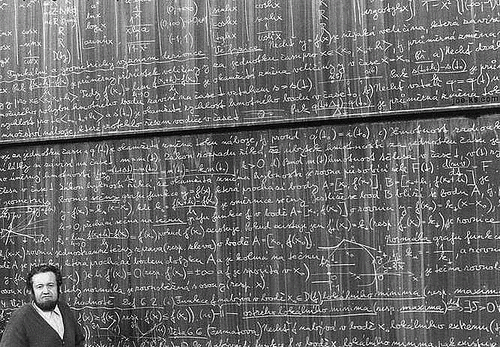

First we take base values directly computed from last year's team performance:
| RS | Regular season performance in prior season |
| PS | Post-season performance in prior season |
Factored into these base values is a function of the following modifiers (the calculation is shown below):
| Imp | Second-half improvement in prior season |
| Ret | Returning players from prior season |
RS = Prior regular season's points, or percentage multiplied by 44 if a team has not played 22 games.
|
|
RS |
| Brown | 16 |
| Clarkson | 11 |
| Colgate | 26 |
| Cornell | 31 |
| Dartmouth | 17 |
| Harvard | 17 |
| Princeton | 18 |
| Quinnipiac | 22 |
| RPI | 23 |
| St. Lawrence | 23 |
| Union | 28 |
| Yale | 32 |
The number of upset advances (+1) or eliminations (-1) in the previous season's ECAC playoffs, multipled by 2. The consolation game is ignored.
|
|
PS |
| Brown | +4 |
| Clarkson | 0 |
| Colgate | -2 |
| Cornell | 0 |
| Dartmouth | 0 |
| Harvard | +2 |
| Princeton | -2 |
| Quinnipiac | 0 |
| RPI | -2 |
| St. Lawrence | +2 |
| Union | 0 |
| Yale | -2 |
One-half (rounded down) of the difference in points gained in the second half (games 12-22) minus the first half (games 1-11) of the prior ECAC regular season.
|
|
Pts | G 12-22 | G 1-11 | Diff | Imp |
| Brown | 16 | 9 | 7 | 2 | 1 |
| Clarkson | 11 | 7 | 4 | 3 | 1 |
| Colgate | 6 | 13 | 13 | 0 | 0 |
| Cornell | 31 | 15 | 16 | -1 | 0 |
| Dartmouth | 17 | 13 | 4 | 9 | 4 |
| Harvard | 17 | 7 | 10 | -3 | -3 |
| Princeton | 18 | 11 | 7 | 4 | 2 |
| Quinnipiac | 22 | 8 | 14 | -6 | -3 |
| RPI | 23 | 11 | 12 | -1 | 0 |
| St. Lawrence | 23 | 9 | 14 | -5 | -2 |
| Union | 28 | 11 | 17 | -6 | -3 |
| Yale | 32 | 16 | 16 | 0 | 0 |
This metric is based on returning % of last year's players:
We sum these three stats and then multiply by 7 to scale the percentages to a metric comparable to the other season points metrics. (We chose 7 by the following arbitrary logic. The difference between the theoretical max and min of the sum of the three stats is 3.00. Multiplying by 7 gives a theoretical maximum spread of 21 points -- just barely shy of one-half of an ECAC season. That seemed about right. Note that in practice the real spread will be around 1.00, or 7 points -- very close to the max spread of 6 points from the former RetF, RetD and RetG stats.)
The team breakdowns are shown here.
All of last year's seniors are assumed non-returning. This year there are five significant players with eligibility remaining known to not be returning:
| RetF | RetD | RetG | Ret | |
| Brown | .63 | .59 | .90 | 15 |
| Clarkson | .73 | .94 | 1.00 | 19 |
| Colgate | .70 | 1.00 | .64 | 16 |
| Cornell | .63 | .50 | .02 | 8 |
| Dartmouth | .94 | .80 | 1.00 | 19 |
| Harvard | .91 | .51 | .99 | 17 |
| Princeton | .57 | .73 | .30 | 11 |
| Quinnipiac | .31 | 1.00 | 1.00 | 16 |
| RPI | .53 | .84 | 1.00 | 17 |
| St. Lawrence | .46 | .52 | .13 | 8 |
| Union | .64 | .53 | .99 | 15 |
| Yale | .73 | .49 | .77 | 14 |
Ned = RS + PS + Imp + Ret
The predicted finish is the rank-order of Ned. Tie-breakers go in order of the stats: first RS, then PS, then Imp.
|
|
RS | PS | Imp | Ret | Ned | Rank |
| Brown | 16 | +4 | 1 | 15 | 36 | 7 |
| Clarkson | 11 | 0 | 1 | 19 | 31 | 11 |
| Colgate | 26 | -2 | 0 | 16 | 40 | 3 |
| Cornell | 31 | 0 | 0 | 8 | 39 | 5 |
| Dartmouth | 17 | 0 | 4 | 19 | 40 | 4 |
| Harvard | 17 | +2 | -3 | 17 | 35 | 9 |
| Princeton | 18 | -2 | 2 | 11 | 29 | 12 |
| Quinnipiac | 22 | 0 | -3 | 16 | 35 | 8 |
| RPI | 23 | -2 | 0 | 17 | 38 | 6 |
| St. Lawrence | 23 | +2 | -2 | 8 | 31 | 10 |
| Union | 28 | 0 | -3 | 15 | 40 | 2 |
| Yale | 32 | -2 | 0 | 14 | 44 | 1 |